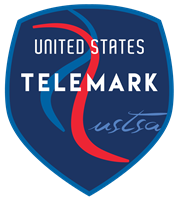Overview of the History of US Telemark
Skiing has existed as a mode of transportation for at least 4000 years, based on rock carvings found in Norway. There is some evidence that soldiers used skis in the middle ages. In the late 1800’s skiing made a shift from a method of transportation to a recreational activity. People from villages in Norway would gather to ski, jump and compete on their skis. Sondre Norheim is credited today as being the father of telemark skiing. He was a Norwegian, living in the area of Telemark, Norway when in 1866 he was invited to attend the first known ski jumping contest and won, impressing the audience with his performance. In 1868, Sondre competed in the first national skiing competition held in Oslo where he used the Telemark turn and was the only competitor using curved skis and bindings with heel bands made of willow. While Sondre may not have been the first to use this new method and equipment, he is known for bringing attention to these methods and for moving skiing from a method of transportation to a sport. Following is a video that explores what the sport might have looked like in Morgedal Norway in the late 1860’s.
In the 1900s as the sport of skiing progressed, and ski resorts with groomed hills were developed, the Telemark technique fell out of favor and was all but forgotten as the parallel techniques became the method to use. Parallel techniques were easier to learn, especially on firm, groomed snow and the Alpine method of skiing became the norm.
In the 1970s, the Telemark Revival began in the United States as a way to reach and ski in the back country. While skiers in Crested Butte are often credited with beginning the tele revival, it is likely that it began in multiple locations as cross country ski tourers began to push the boundaries of their sport so that they could venture into the backcountry. In the late 1980’s Ron Ridenour of Whitefish wrote this article about how Telemark started in Montana. In addition to Telemark skiing in the back country, many skiers have moved to this technique for resort skiing and for racing in addition to back country skiing. Telemark enthusiasts organized races and festivals at their local ski hills and the sport grew quickly. Read an article by Mitch Weber published in Telemarktips.com (no longer on the web) abut the origins of the sport.
View this video by Curtis Johns, produced in 1986 as a class project about the beginnings of telemark in the US.
Ski Telemark from Curtis Johns on Vimeo.
For a brief time, in the late 1980’s to the early 1990’s, Telemark racing fell under the umbrella of USSA, the US Ski and Snowboard Association. It was at this time that the Viken Fjord National Telemark Series was held. During these years the Slalom, Dual Slalom, Giant Slalom, Mogels and All Terrain races were the standard events.
The US Telemark Ski Association was formed officially in 1993 to support the sport of Telemark racing. The USTSA names the top US racers to several race teams each year. USTSA hosts the US Telemark National Championships, FIS World Cup events and it sanctions other telemark events and training in the US. In 2016, USTSA incorporated the Freeheel Life freeski competitions into the organization.
The events that comprise Telemark racing have changed over the years. As the sport progressed, nordic elements such as jumping and skating were incorporated to the events creating the Sprint Classic, the Classic and more recently the Parallel Sprint events. Read more about the current Telemark Disciplines.
The USTSA has representation on the FIS Telemark Committee who work to promote Telemark as a future Olympic Sport. USTSA hosts FIS World Cup events every few years. World Championships have been held only twice in the USA. The first was in Whitefish, MT in 2003; and the second in Steamboat Springs, CO in 2015.
We hope you enjoy this trip through time by taking a look at the timeline we have prepared for US Telemark from the 1980’s through the present time.
